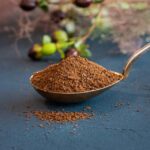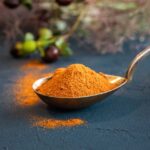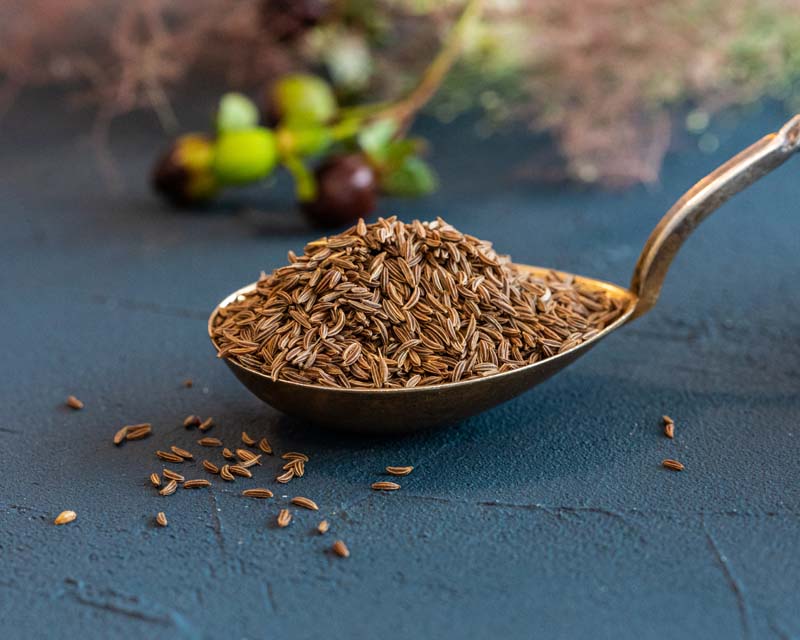

Organic caraway seeds
From 1.10€
Organic caraway seeds
The health benefits of caraway seeds have been known since ancient times. In fact, caraway (carum carvi) is one of the oldest herbs and medicinal plants still used in Europe. Caraway seeds are not only healing but also have a long culinary and medicinal history.
What is caraway?
Caraway is a plant in the Apiaceae or Umbelliferae family. The Apiaceae family includes varieties of celery, carrots, fennel and parsley with aromatic qualities. Caraway is native to Europe, North Africa and West Asia.
Caraway is a biennial plant, and in its first year its leaves can be a great addition to soup or salads. Caraway can grow up to a metre tall with soft, feathery leaves. Caraway flowers bloom in white or pink blossoms from May to July, before they start to produce.
What are caraway seeds?
The seeds and leaves of caraway are very similar to those of other plants in the celery family, which is why caraway seeds are sometimes confused with fennel and caraway.
The seeds of caraway stand out, though only on close inspection. The crescent-shaped seeds of caraway seeds are darker in colour and smoother than those of cumin. Cumin seeds are also more bitter than caraway seeds. The aroma of caraway seeds can be described as slightly minty or peppery.
What does caraway taste like?
Caraway seeds have an aniseed flavour, although less pronounced than the aniseed flavour of fennel seeds. Caraway seeds also have a grassy bitterness with strong aromatic qualities. That’s why cumin is a common savoury spice in traditional European cuisine and baked goods.
How are cumin seeds used?
Cumin has long been used by people both as a culinary and medicinal herb. In fact, people started collecting caraway seeds in the Neolithic period. In the Middle Ages, people used cumin as a digestive stimulant after large feasts to prevent bloating and other digestive problems.
In addition to its many culinary uses, cumin is scientifically recognised for its medicinal properties.
Cooking uses of cumin
Cumin is popular in traditional European cuisine as a seasoning for cabbage dishes, sauerkraut, bread, onion pie, baked potatoes and more.
Cumin has been believed to improve the health of those who include cumin in their diet.
Cumin has been reported to possibly improve digestion, reduce bloating and help promote a healthy appetite.
Cumin tea recipe
Ingredients:
1 teaspoon crushed cumin seeds,
200 – 300 ml cup of hot water,
Preparation:
Crush or grind the cumin seeds in a pestle. Crushing the cumin helps to release the essential oils and rich flavour.
Use 1 teaspoon of crushed caraway per cup of hot water. Leave for 10 minutes to swell.
Do not brew tea or use boiling water to avoid damaging the essential oils.
This tea supports healthy digestion, especially after meals.
For more complete digestion, mix equal parts caraway, peppermint and chamomile. This blend is an ideal combination for the whole digestive tract.
For more information see:
1. Organicfacts
2. NationalLibraryOfMedicine
NOTE. The information contained herein should not be construed as a recommendation for treatment or other health issues. We encourage you to make personal decisions about your personal health, taking into account a wide range of sources of information.
Organic cumin 100%
Energy (kJ / kcal): 1612 / 385
Fat (g): 14,6
- of which saturates (g): 0,6
Carbohydrate (g): 37,3
- of which sugars (g): 7,4
Fibre (g): 12,7
Protein (g): 19,8
Salt (g): 0,040
Store in a dry, cool place.


